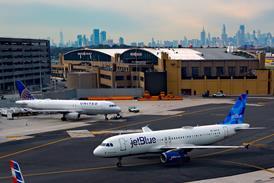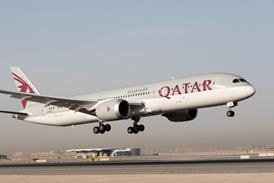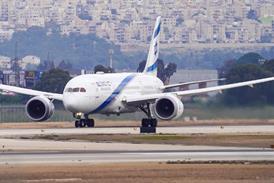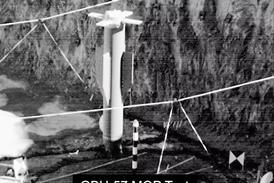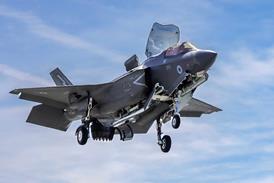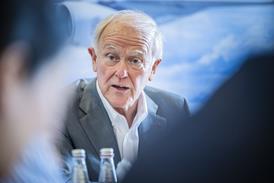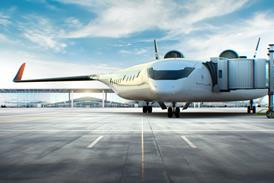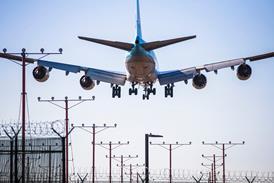Hindustan Aeronautics (HAL) is pressing ahead with several fixed-wing combat aircraft programmes, as it also places a bigger emphasis on research and development and overseas partnerships.
In a recent interview with FlightGlobal, HAL chairman and managing director DK Sunil discussed several combat types that are key for the Indian air force’s future, such as the developmental Tejas Mk2 Light Combat Aircraft, a big upgrade project for the Sukhoi Su-30MKI, and frontier programmes such as the Advanced Medium Combat Aircraft (AMCA) and collaborative combat aircraft.
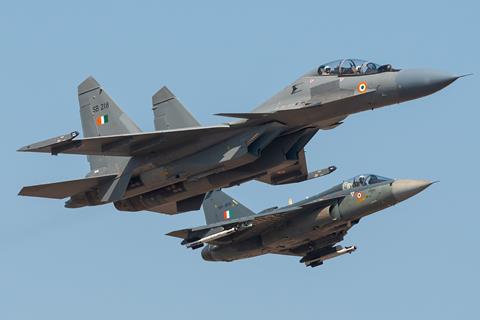
Sunil says that the Tejas Mk2 development programme is going well. The new variant improves on the Tejas Mk1A, which is poised to start deliveries to the Indian air force in the current financial year, which ends on 31 March 2026.
“[Tejas Mk2] parts are being manufactured, and we are now into sub-assemblies, with [production of] the wings and fuselage going on,” says Sunil.
The state-owned airframer expects to roll out the first example during the first quarter of 2026, at which point the aircraft will be powered on, and ground checks will commence. A first flight is expected later in the year. Sunil describes the Mk2 as a “more digital aircraft” than previous Tejas variants, both in how the aircraft was designed and the way it will be manufactured.
Instead of physical drawings, the jet benefits from 3D digital renderings of systems and components. After a component is produced, laser scanning ensures that it is in total compliance with the digital model.
“There are a lot of new technologies in the way we transfer [designs] to manufacturing,” says Sunil. “The accuracy has improved and the speed.”
The Mk2, however, lacks a ‘digital twin’ that can be used for virtual testing. HAL is working on this, and has established its own data cloud, but a ‘digital twin’ requires vast amounts of very accurate data.
New Delhi has yet to order the Mk2, but Sunil expects it to buy “at least eight squadrons”, or roughly 100-130 examples.
He sees the Mk2 replacing the Sepecat Jaguar and Dassault Aviation Mirage 2000s – both of which have seen extensive upgrade work over the years – in the 2035-2040 timeframe.
Another major programme for HAL is an effort to upgrade 84 Su-30MKIs, of which HAL had previously produced 222 examples under licence at its Nashik factory.
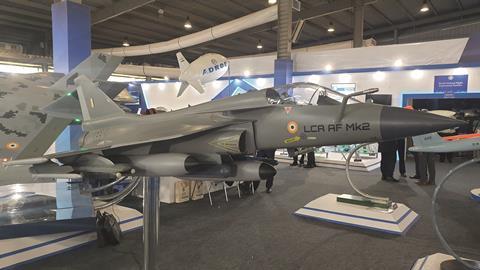
The government has yet to sign off on the precise details of the upgrade, but the work will see the jets receive modernised avionics, sensors, and an improved electronic warfare capability. HAL’s board has approved some funding for the programme, allowing the company to talk with suppliers about the project. At present, HAL is defining software and systems and expects the green light from the government this year.
Sunil says the upgrade is key as the Su-30MKI will operate with the Indian air force until the middle of the century.
In addition to the planned upgrade programme, HAL got a contract in December 2024 for 12 new-build Su-30MKIs. Given that HAL had ceased Su-30MKI production at Nashik in 2019, it is a considerable effort to get the line recertified and up and running again. Sunil estimates that it will take 18 months to two years to reboot production.
HAL has asked the government if it can keep the line active by producing a few Su-30MKIs annually.
Under a licenced production arrangement, HAL continues to deliver the powerplant for the Su-30MKI – the Saturn AL-31FP – from its Koraput factory. In September 2024 New Delhi ordered 240 AL-31FPs, and the first engine was handed over to the air force a month later. Production is to run until 2032.
Sunil adds that while getting supplies from Russia for the Su-30MKI fleet was problematic in 2024, the situation has stabilised, with HAL receiving spares and components.
“They do have some issues because their plants are running full for their own purposes, but we’ve been in regular discussions with them and we’re getting the supplies,” he says.
HAL is also looking at India’s AMCA programme, which will see the indigenous production of a stealth aircraft. In a profound step for India’s aerospace sector, New Delhi recently said that it is open to private bids to develop AMCA – in decades past this work would have gone to HAL by default.
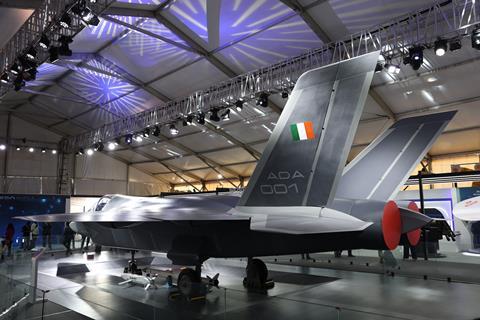
AMCA is already well progressed. The country’s Aeronautical Development Agency has completed a full-scale engineering demonstrator, and a life-sized model was displayed at the Aero India show in February. The air force is expected to obtain 120 examples.
“The government is interested in bringing in other players [with AMCA], as it’s only HAL that has been dominating the aerospace industry,” says Sunil.
He observes that the government is keen to develop alternatives, especially since HAL has such a large orderbook. Still, he says that HAL could be part of a consortium bidding for AMCA work.
Another objective of farming out AMCA work, he adds, is to broaden employment in the country, particularly if the new fighter can generate export orders.
“Because we are a government company, the compliance is huge, so obviously our costs are higher,” says Sunil.
“It makes a lot of sense in the future to farm out this stuff to these companies and focus on the work we are very good at, such as integration testing and deliveries. But not withstanding that, we’ve taken a cautious approach so that we don’t go to the other extreme and outsource everything and get into trouble. We’ve decided to keep some lines with us.”
He is also upbeat about the company’s HJT-36 intermediate jet trainer, which has suffered over two decades of issues. In February, HAL rebooted the programme, formerly known as ‘Sitara’, as the ‘Yashas’. HAL says it has made extensive modifications to the aircraft to ‘resolve departure characteristics and spin resistance throughout the aircraft envelope’.
Powered by a single AL-55I engine, the HJT-36 aims to fill a niche between basic trainers and advanced jet trainers. The air force has agreed to take four examples on a lease basis to evaluate the aircraft. The four jets will be upgraded versions of 12 existing limited series production jets.
“They’re still very cautious, but now they’ve seen that we’ve upgraded it with a full glass cockpit, and we fixed the problems we had with the spin,” says Sunil.
“It’s a very capable jet now that the problems are fixed, and we expect that in the coming years it will definitely become the mainstay of the Indian air force.”
Sunil says going from a turboprop to a Hawk 132 advanced jet trainer – which HAL produced under licence from BAE Systems – represents a “big jump” for new pilots. In addition, the air force’s HJT-16 Kiran intermediate jet trainers are ageing.
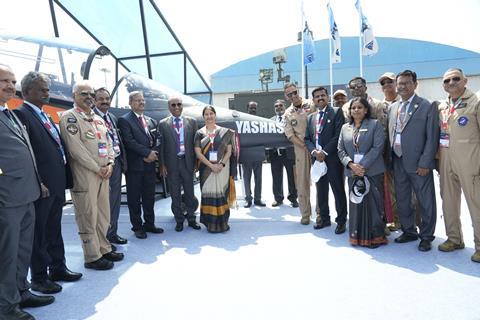
Moreover, Sunil expects international interest in the HJT-36 following its eventual induction in the Indian air force.
The HJT-36 also has potential as a light-attack jet. HAL has already conducted some basic weapons trials. Sunil says the type’s mission computer makes it possible to integrate weapons, and the jet has hardpoints. This could be “the next logical step” for the aircraft.
In frontier developments, HAL is progressing India’s collaborative combat aircraft, the Combat Air Teaming System (CATS) Warrior, which is designed to work alongside the Tejas. The company first unveiled the CATS concept at the 2021 Aero India show.
Sunil says that an engine has already been integrated and run with the CATS Warrior airframe. HAL is also performing datalink checks with the aircraft. Next year, the company will focus on flight control laws and aerodynamics, pending a first flight in 2027.
As for HAL’s prospects in India’s dynamic and rapidly developing aerospace sector, characterised by growing involvement from the private sector, Sunil describes an evolved outlook at the company. He feels that HAL has moved from being a conservative operation dependent on government funding, to funding its own research and development.
“We had the financial muscle, but the thinking has changed,” says Sunil. “Now we are willing to partner, and to put our money into our own R&D.”
He estimates that the company invests Rs25 billion ($300 million) annually on R&D.
“We’re willing to invest in R&D, we’re willing to invest in partnerships to secure our supply chains,” he says.
Sunil feels that supply chains are more critical than ever. He notes that Russia’s invasion of Ukraine has seen defence budgets rise in Europe. Whereas Europe was previously focused on defence exports, now it has considerable demand at home, offering sufficient work locally, potentially resulting in the de-prioritisation of foreign customers, such as India. Demand for raw materials has also gone up.
Given the big changes in the global outlook, and the impact on aerospace supply chains, Sunil is a big proponent of local production in India. He feels that international firms should boost production in India, including through joint ventures, and use India as a base for exporting to other markets.
“The future of aerospace and defence in India is massive if you look at the number of projects going on. We have AMCA, we have the Tejas Mk2, and helicopters. There are UAV companies coming up and lots of start-ups. The landscape is going to be massively different in the next 10 years.”

